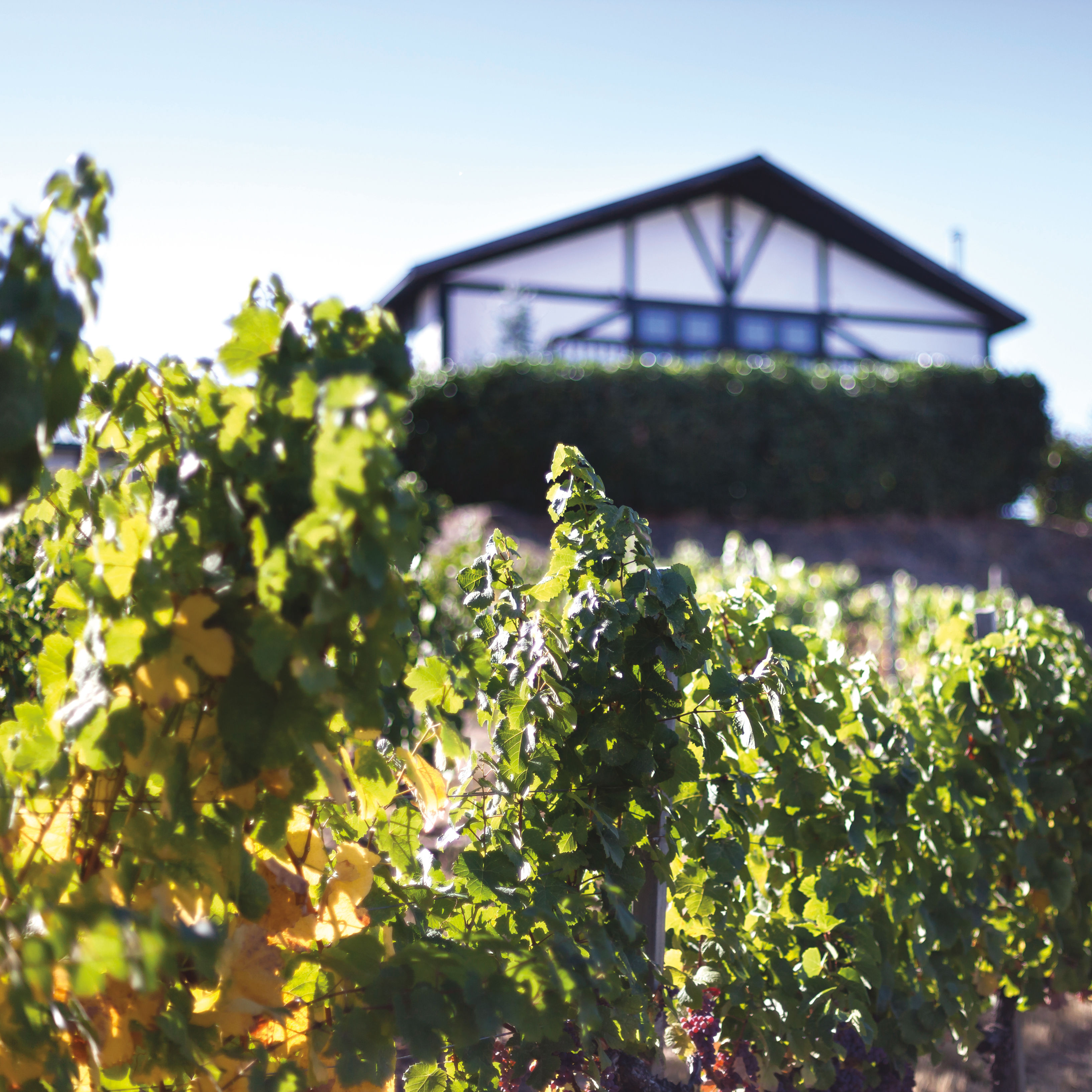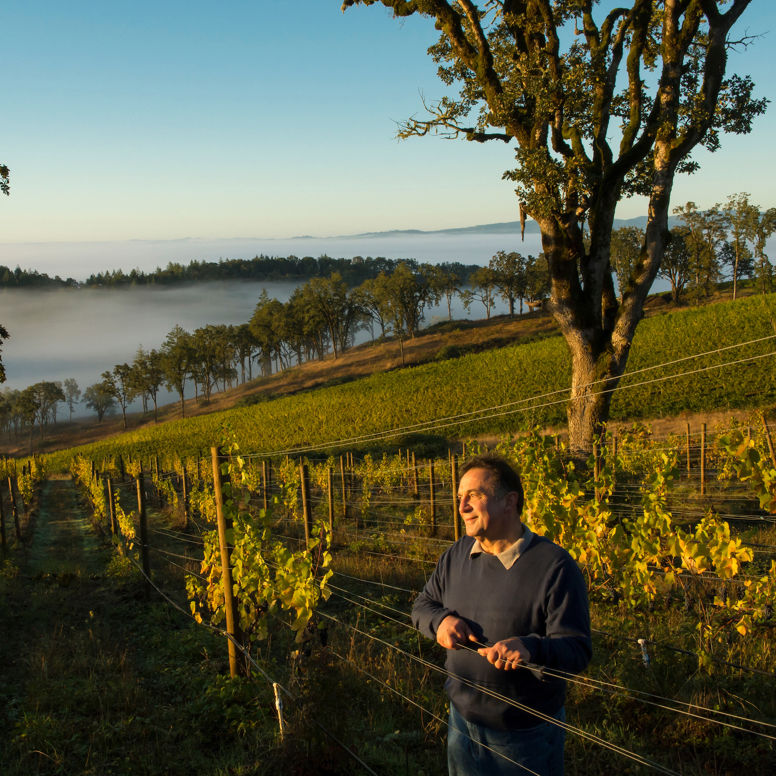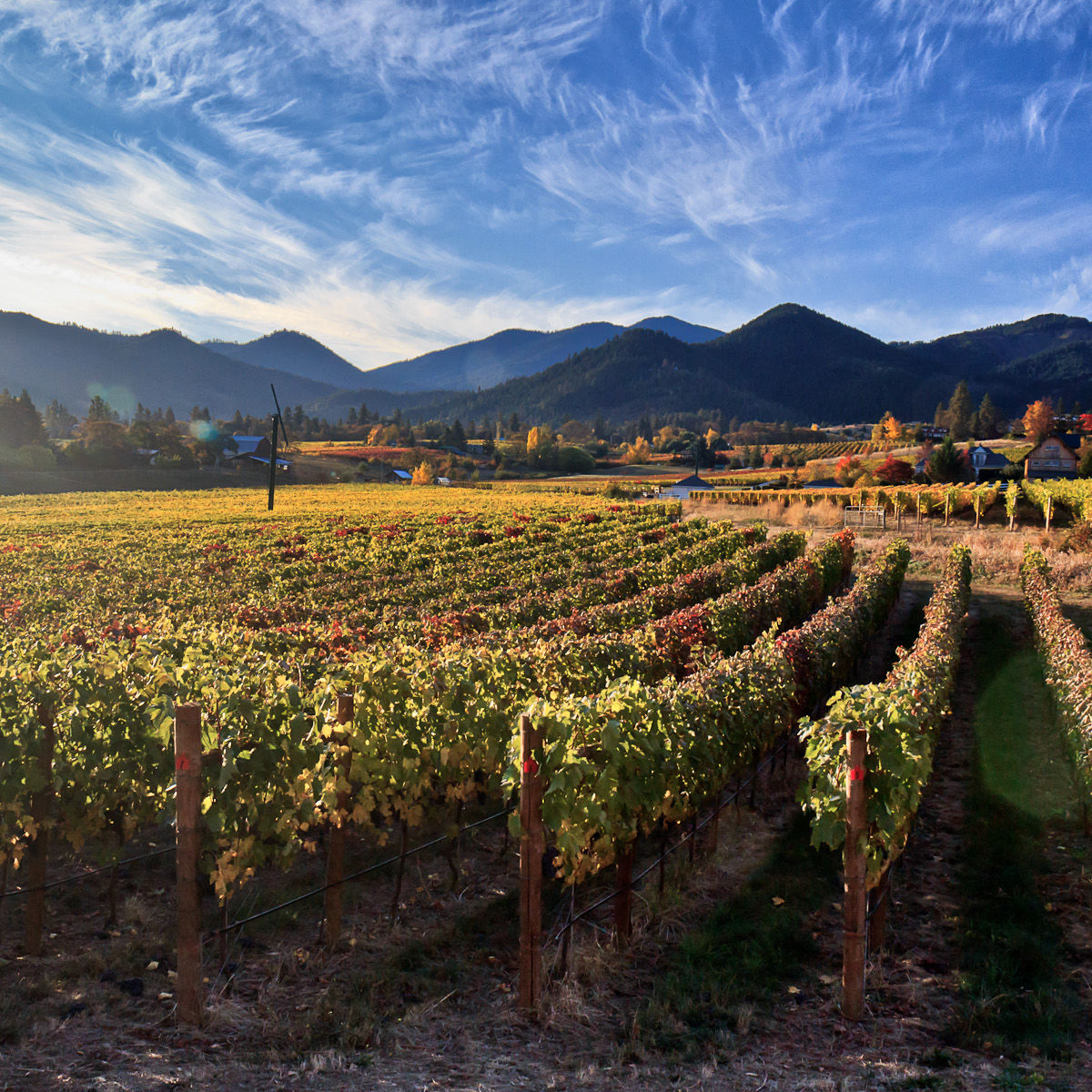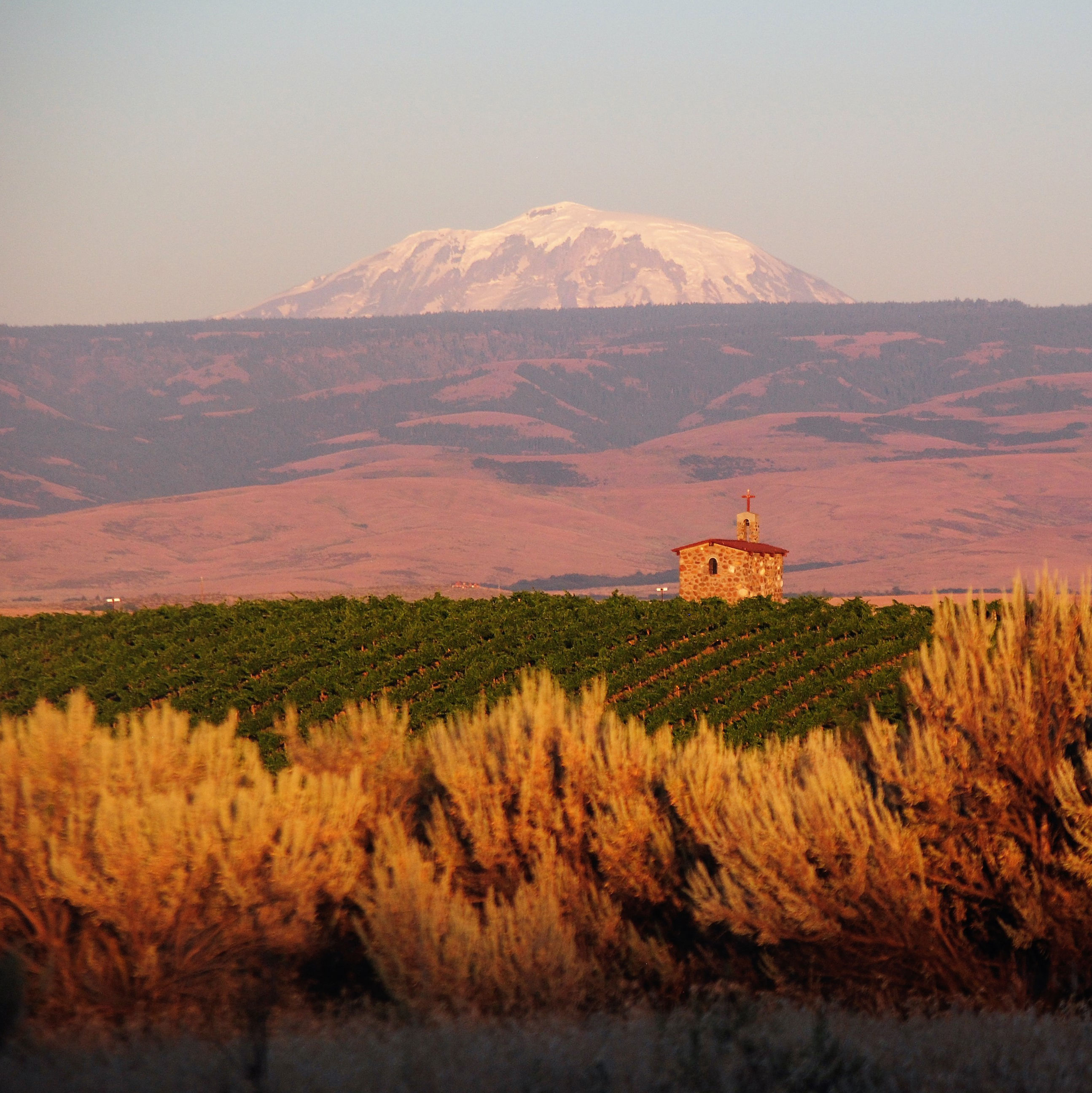How a Fresh Crop of Winemakers Is Upending Oregon Tradition
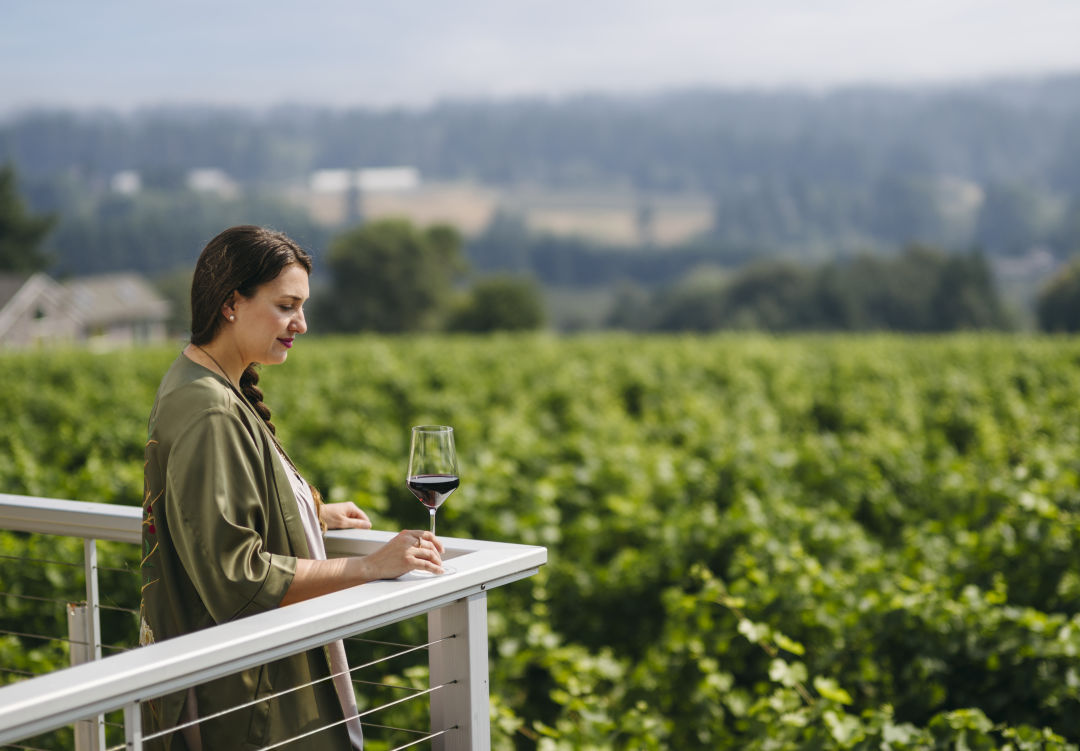
Leah Jørgensen looks out over the Chehalem Moutains’ Raptor Ridge Winery, where she makes her wine.
Image: Isaac Lane Koval
Shimmy up Leah Jørgensen’s family tree and crawl gingerly out onto the delicate uppermost branches. Or dig all the way down to the quick of its roots. You’ll find wine, not water, keeping it alive.
Jørgensen’s mother descends from four centuries of Southern Italian winemakers, as well as Austrian coopers who made their family fortune supplying the wooden barrels for storing and aging the stuff.
But the wines 43-year-old Jørgensen makes aren’t steeped in tradition—not local tradition, at least. Leah Jørgensen Cellars, her label inspired by France’s Loire region, is best known for its white cabernet franc, a light, lemony sipper with notes of stone fruit and hazelnut. It’s rare enough to make cab franc in Oregon, where pinot noir has ruled the roost since Eyrie Vineyards’ late David Lett planted his pioneering crop in 1966. It’s downright crazy to make a white wine, thought to be the first of its kind in this country, from the grape. Meanwhile, you won’t find many of modern winemaking’s high-tech additives—gelatin to fish bladder—in her barrels. Says Jørgensen: “I take a minimalist approach to making wine. Rather than follow dogma, I respond to what the vintage and each site gives me.”
Winemakers like Jørgensen are part of a turning tide in Oregon, as new faces buck the pinot tradition that built the state’s $3.4 billion industry and embrace new varietals and experimental, small-batch winemaking.
Ron Acierto, somm-about-town and former owner of wine bar Muselet, thinks the shift is due to pinot’s high and expensive barrier to entry. “If you want to do a pinot noir, you need the capital to back it so that you can compete with Oregon’s premier pinot winemakers,” he says. Small-scale players are certainly making good pinot noir—Laelaps, an offshoot of Portland’s Southeast Wine Collective, produces well-regarded pinots in batches of fewer than 100 cases, to cite just one example. But that demand for capital means Oregon’s signature wine, the varietal that accounted for 50,000 tons of grape production in 2015 versus 389 for cab franc, is likely to remain the stomping ground of the Willamette Valley’s big, established operations.
And it means there’s a whole world of wine for innovative Oregonians to discover.
Acierto points to Bow & Arrow’s Scott Frank, who’s also been bitten by the Loire bug. His wines are made with Loire varietals, in the Loire style—and without leaning on additives. At Division Winemaking Co, Thomas Monroe and Kate Norris work on making Oregon gamays the next big thing. Down in Gervais, near Woodburn, Fossil & Fawn’s Jim Fischer is making red pinots gris, à la Jørgensen’s white cab francs.
Like Jørgensen, Frank takes what he calls a minimalist, preindustrial approach (although he veers away from placing himself under the often vague, currently voguish “natural” winemaking umbrella). The only additive he uses is sulphur, which he likens to adding salt when cooking: too little or too much can ruin your batch, but adding just the right amount can make a vintage come to life. “Making wine in this manner—it’s not technique; it’s more philosophy,” he says.
While Jørgensen respects Oregon’s big guys—after all, those large wineries put Oregon on the winemaking map—she’s embraced what she calls “honest” winemaking, letting the fruit do the talking. “I sing opera to my ferments, and I hug my barrels,” she says. “Sounds hippie, but science is behind the love.” Whatever she’s doing, it seems to be working. Jørgensen says she’ll put out about 1,600 cases in 2017, up from her modest 23-case experiment, where it all started, in 2011.
